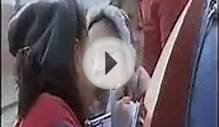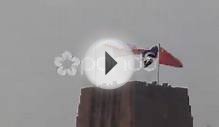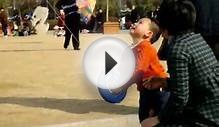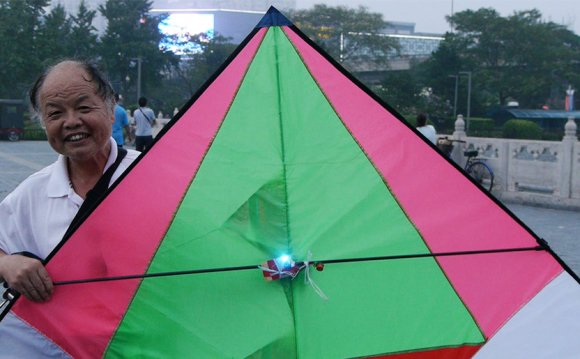
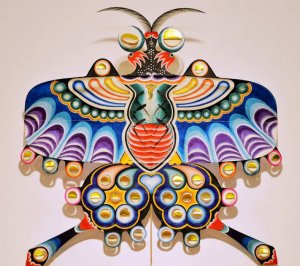 The making and flying of kites is a tradition in China that goes back thousands of years. One of the earliest uses of kites was in fishing, the kite would trail a line with hooks and bait allowing the kite-flier to fish in areas some way out over rivers or the sea.
The making and flying of kites is a tradition in China that goes back thousands of years. One of the earliest uses of kites was in fishing, the kite would trail a line with hooks and bait allowing the kite-flier to fish in areas some way out over rivers or the sea.
An early legend about the origin of the kite is that the philosopher Mozi built a kite made of wood in the form of an eagle near Mount Lu in Shandong. The kite was made much lighter when silk and bamboo replaced wood. The invention of fine and cheap paper in China made kites even easier to build. There is also an ancient legend concerning Huan Jing who was told by the soothsayer Fei Jiangfang (費長房) to flee to high land, on the double ninth Chongyang festival and drink wine in which chrysanthemum petals had been soaked. He did as he was told and Kite flying on this day became an annual festival.
Youtube video not enabledKites used to used in battles; a very large kite is strong enough to lift a soldier into an enemy town; while others were used to drop propaganda leaflets into besieged cities. General Hanxin (c. 231?196 BCE) ➚ used kites to measure the distance to enemy walls so that guns could be targeted and tunnels could be excavated to the correct distance. He flew a kite higher and higher until the shadow of the kite just hit the wall, by measuring the length of kite string and the angle of the sun he could work out the accurate distance to the town. Early armies used whistles attached to kites to frighten an army at dead of night. If bamboo strips are attached to kites and flown in the wind then they make sounds like musical instruments in the wind. This is the origin of the Chinese name for a kite: fēngzhēng (feng 风 - wind and zheng 筝 - a musical instrument)
Traditional butterfly inspired kite design
Youtube video not enabled
 Kite flying at times has been an Imperial pastime, Emperor Xuanzong of the Tang dynasty is known to have loved to fly them. By tradition, it is considered bad luck to lose a kite or pick up one that has been lost. The passion for kite flying has spread from China to all parts of Asia. There is a large range of different designs of kites, some are 3 dimensional rather than flat and often are made in the form of creatures such as: birds, bats and dragons. The size of kites varies enormously, they can be several hundred yards in length. However, most designs have a common basic frame made from bent bamboo. On public holidays in public parks you will see many people flying kites. The traditional kite flying season starts on the Chongyang festival held in October. At the Qingming Festival kites were flown to send messages to departed loved ones, if the kite string is cut then bad luck was considered to fly away with the kite.
Kite flying at times has been an Imperial pastime, Emperor Xuanzong of the Tang dynasty is known to have loved to fly them. By tradition, it is considered bad luck to lose a kite or pick up one that has been lost. The passion for kite flying has spread from China to all parts of Asia. There is a large range of different designs of kites, some are 3 dimensional rather than flat and often are made in the form of creatures such as: birds, bats and dragons. The size of kites varies enormously, they can be several hundred yards in length. However, most designs have a common basic frame made from bent bamboo. On public holidays in public parks you will see many people flying kites. The traditional kite flying season starts on the Chongyang festival held in October. At the Qingming Festival kites were flown to send messages to departed loved ones, if the kite string is cut then bad luck was considered to fly away with the kite.
Tianjin and Weifang ➚, Shandong are two cities particularly associated with kites, they hold annual competitions that attract enthusiasts from many countries. For a lovely web page showing 99 kite designs you can visit the University of Maine ➚.
Flying kites in a city park
Youtube video not enabled
Chinasage is a new web resource, started in 2012, pages will be added, enhanced and re-formatted regularly. Please check back soon for updated information about China. This page last updated 5 Oct 2015.
YOU MIGHT ALSO LIKE
